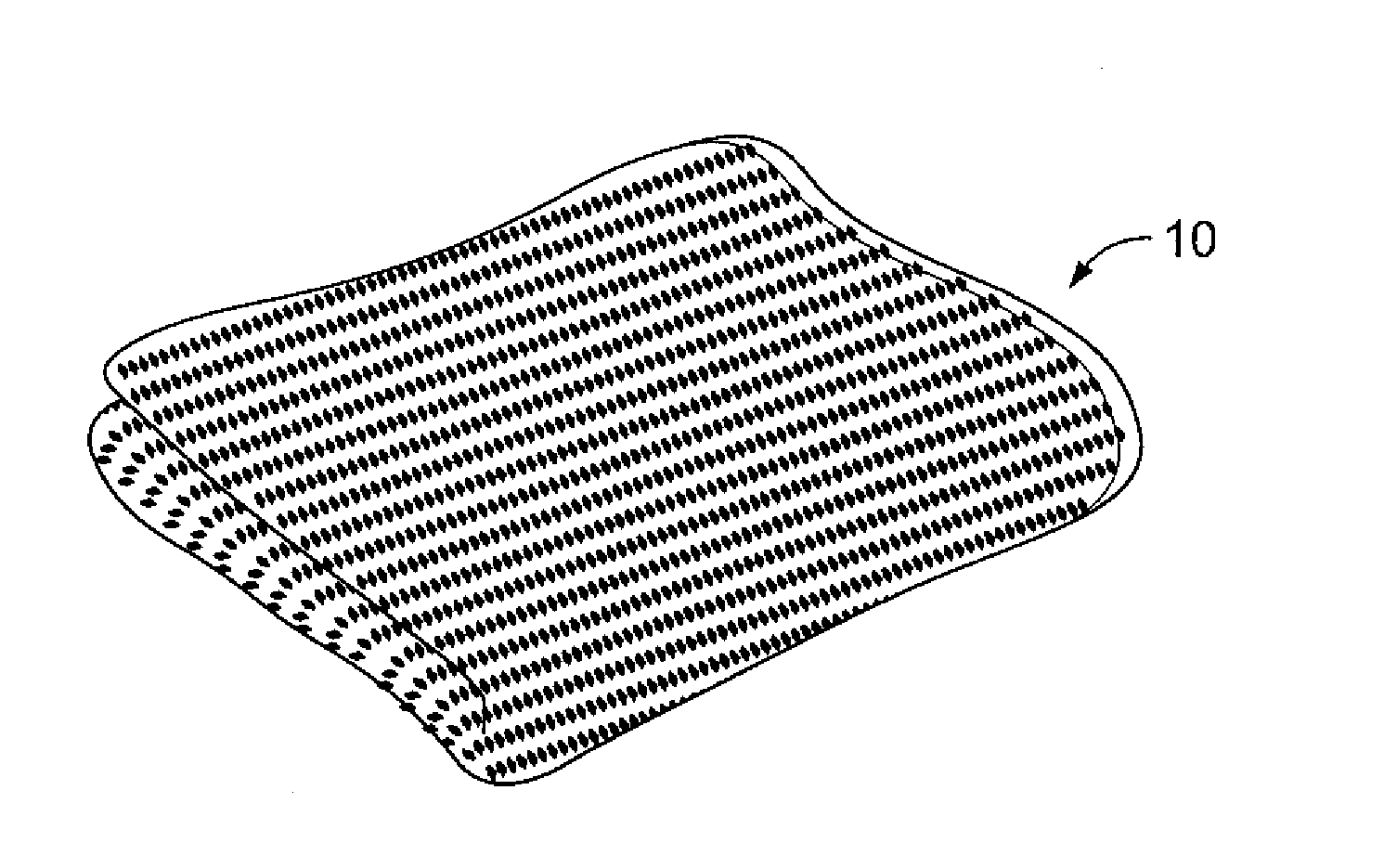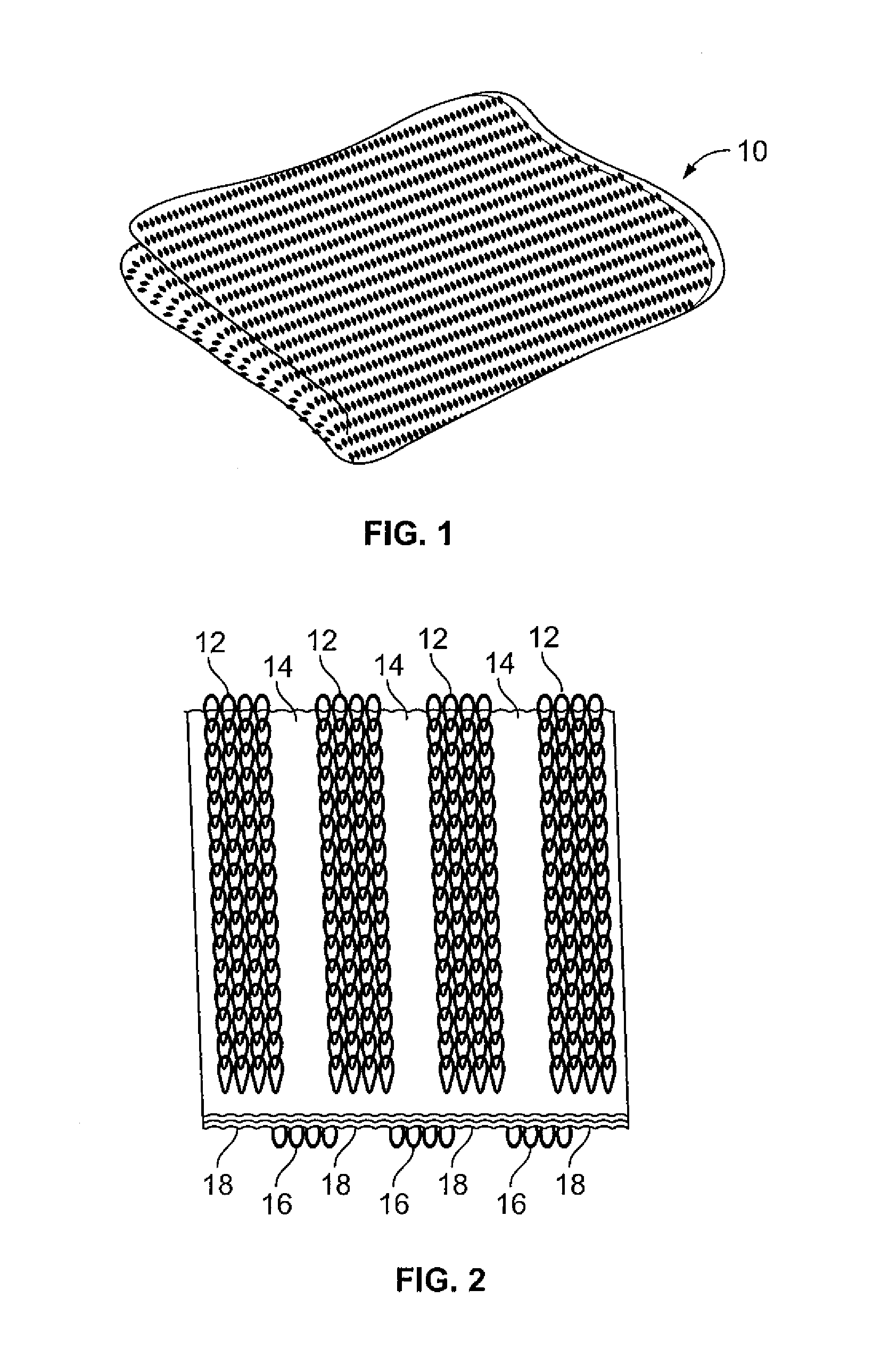Low weight terry fabric and a method of producing the same
- Summary
- Abstract
- Description
- Claims
- Application Information
AI Technical Summary
Benefits of technology
Problems solved by technology
Method used
Image
Examples
Embodiment Construction
[0026]In the following description, certain terms of art may be used. The terms are given their ordinary meaning as known to one skilled in the art, as reflected in, e.g., Yilmaz, et al., “The Technology of Terry Towel Production,” Journal of Textile and Apparel, Technology and Management, Vol. 4, Issue 4, Summer 2005; “The Complete Textile Glossary,”© 2001 Celanese Acetate LLC; and “A Glossary of Selected Fiber and Textile Terms,” Bally Ribbon Mills, each of which is incorporated herein by reference.
[0027]In addition, definitions are provided for the terms that follow.
[0028]“Tensile strength” is the usual breaking strength of yarn. Tensile strength of typical cotton yarn is from about 450 gf / tex to about 500 gf / tex.
[0029]“Pile ratio” is understood to be the ratio calculated between ground warp and pile warp. Usually it is measured from 10 centimeter of a towel size. Pile warp will be usually in excess length due to loop formation than the ground warp.
[0030]The “loop length” of a pi...
PUM
| Property | Measurement | Unit |
|---|---|---|
| Fraction | aaaaa | aaaaa |
| Fraction | aaaaa | aaaaa |
| Fraction | aaaaa | aaaaa |
Abstract
Description
Claims
Application Information
 Login to View More
Login to View More - R&D
- Intellectual Property
- Life Sciences
- Materials
- Tech Scout
- Unparalleled Data Quality
- Higher Quality Content
- 60% Fewer Hallucinations
Browse by: Latest US Patents, China's latest patents, Technical Efficacy Thesaurus, Application Domain, Technology Topic, Popular Technical Reports.
© 2025 PatSnap. All rights reserved.Legal|Privacy policy|Modern Slavery Act Transparency Statement|Sitemap|About US| Contact US: help@patsnap.com



